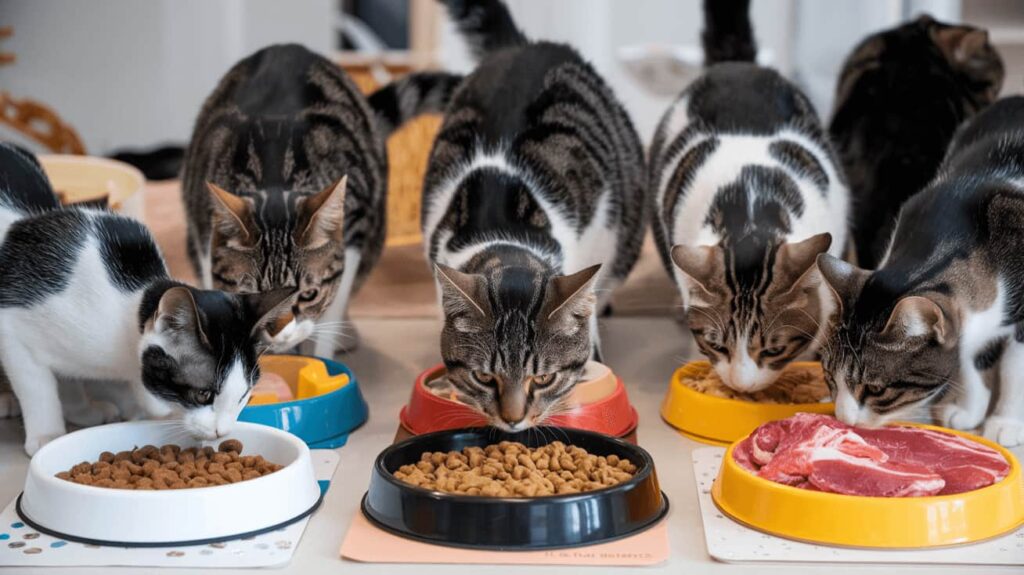Cats are known for their distinct personalities and behaviors, which can be influenced by various factors, including diet. As a responsible pet owner, you might wonder whether changing your cat’s food could affect its behavior. The short answer is yes. A shift in diet can lead to noticeable behavioral changes due to differences in ingredients, nutrient composition, and even the palatability of the food.
Let’s explore how changing cat food can impact your feline friend’s behavior and how to transition to a new diet smoothly.
How Diet Influences Cat Behavior
Nutrition plays a crucial role in a cat’s overall well-being, including its mood, energy levels, and cognitive function. Cats require a diet rich in protein, essential fatty acids, vitamins, and minerals to maintain optimal health. When their dietary needs are not met or are abruptly changed, behavioral shifts can occur.
Possible Behavioral Changes After Switching Cat Food
Changing your cat’s diet may lead to several behavioral changes, including:
1. Increased or Decreased Energy Levels
If your new cat food has a different protein or carbohydrate content, you may notice a shift in your cat’s energy levels. High-protein diets typically provide sustained energy, whereas foods rich in carbohydrates may cause energy spikes or sluggishness.
2. Changes in Appetite and Eating Habits
A new food may be more or less appealing to your cat, leading to overeating or a refusal to eat. Some cats may take time to adjust to new flavors and textures.
3. Gastrointestinal Issues Leading to Discomfort
A sudden change in diet can cause digestive problems like diarrhea, constipation, or vomiting. Gastrointestinal discomfort can make cats irritable, lethargic, or even more vocal than usual.
4. Altered Social Behavior
Cats experiencing digestive discomfort or a nutritional imbalance may become more withdrawn or aggressive. A lack of essential nutrients can also contribute to mood swings and stress.
5. Increased or Decreased Grooming
Certain ingredients may cause allergic reactions, leading to excessive scratching or grooming. Conversely, a lack of proper nutrition may result in a dull coat and reduced grooming activity.
5. Factors That Contribute to Behavioral Changes
Several factors can influence how a cat reacts to a new diet, including:
- Nutritional Content – A change in essential nutrients, such as taurine, omega-3 fatty acids, or amino acids, can affect brain function and behavior.
- Food Sensitivities or Allergies – Some cats develop sensitivities to certain proteins, grains, or additives, leading to discomfort and behavioral issues.
- Transition Speed – Abruptly switching cat food can disrupt gut flora, leading to digestive upset and associated behavioral changes.
- Palatability and Texture – Cats are creatures of habit, and an unfamiliar texture or taste may cause hesitation, refusal to eat, or food aggression.
How to Transition to a New Cat Food Properly
To minimize behavioral changes and digestive upset, follow these steps when introducing a new cat food:
1. Gradual Transition
Gradually mix the new food with the old food over 7-10 days. Start with 75% old food and 25% new food, then slowly increase the new food percentage.
2. Monitor Your Cat’s Reaction
Observe your cat’s eating habits, energy levels, and litter box behavior. If you notice any adverse reactions, slow down the transition or consult your veterinarian.
3. Offer a Consistent Feeding Schedule
Keeping a routine helps your cat feel secure during the transition. Feed at the same time each day and provide fresh water at all times.
4. Avoid Frequent Diet Changes
Unless necessary, avoid switching cat food too often, as this can cause stress and long-term behavioral issues.
When to Consult a Veterinarian
If your cat shows severe behavioral changes, persistent digestive issues, or refuses to eat for more than 24 hours, seek veterinary advice. Underlying health conditions may be exacerbated by dietary changes, requiring professional intervention.
Conclusion
Changing your cat’s food can certainly affect its behavior, either positively or negatively. By ensuring a smooth transition, choosing a nutritionally balanced diet, and monitoring your cat’s response, you can help your feline friend adjust comfortably. Always consult a veterinarian if you notice persistent issues, and prioritize your cat’s health and happiness above all else.













